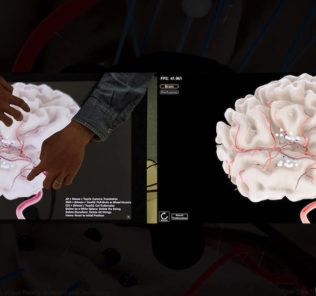7 More Must Know Clinical Simulation Key Terms
Over the past several months HealthySimulation.com has been sharing crucial “must know” clinical simulation key terms every Sim Champion should know. From leading industry vendors to key simulator types, and from unique simulation products to specialized methodology terms — these pages are dedicated to breaking down helpful vernacular. Share these with your entire program to help ensure you are all on the same page! Following these 7 new terms, we share the previous articles highlighting even more helpful terms to know!
EMS Simulator: An EMS Simulator is a medical simulation tool or device used to depict emergency scenarios for education and training purposes. By using an EMS Simulator, trainees and learners alike can practice procedures and treatments that may be involved under high-stress emergency circumstances. Below are the benefits of using EMS Simulators, and a brief outline of just some of the many different types of simulation devices available to Emergency Medical Service educators in the field.
Simulaids: Simulaids is a trauma moulage production company that has provided cutting edge training solutions for over 50 years. The company has been producing trauma moulage products since 1963, making the Simulaid-brand among the first commercially available wounds for EMS practice. Based in New York, the company follows all Centers for Disease Control (CDC) protocols and manikin instructions to maintain the highest quality products. This work is all done in an attempt to improve health care education, healthcare simulation and patient safety through more realistic training aids. Important to note is that that Simulaids is a brand of Nasco Healthcare.
Sponsored Content:
Level 3 Healthcare: Level 3 Healthcare is a division of Level 3 Audio Visual, LLC, an audiovisual technology company located in Mesa, Arizona with over 22 years of experience installing a/v equipment. Level 3 Healthcare currently offers specialized medical simulation audiovisual equipment solutions as they relate to the fields of nursing, emergency medical services, interdisciplinary studies, allied health, dentistry and veterinary care. The company states online that Level 3 Healthcare founders realized that audiovisual consulting within medical simulation was an important, yet missing piece of the overall “puzzle” of simulation. Thus, the company sought out to become a solution provider, along with our powerful partnership with SIMStation, a recording and debriefing solution.
Brain Surgery Simulator: Brain Surgery Simulators are a unique surgical simulation technology advancing the education, training, and practice of neurosurgeons around the world. As medical simulation technology advances and expands, so do the opportunities in the field of healthcare and treatments overall–including neuroscience. In recent years, such advancements in clinical simulation have led to the completion of practical tests using highly advanced Neurosurgery Simulators. The development of such highly promising simulators has brought together both neuroscientists and software engineers engaging in close collaboration to create greater training and education modules.
Laerdal’s vSim: Unveiled and demonstrated at the International Meeting on Simulation in Healthcare (IMSH) conference in 2014, vSim is a line of simulation products for nursing students to learn patient scenarios through virtual modules. Co-developed by Laerdal Medical and Wolters Kluwer Health’s Lippincott Williams & Wilkins division, the nationally recognized scenarios that vSim depicts are all tied to core nursing school curricula. They were selected to help ensure that students are prepared for all possible real-world scenarios and confident enough in their abilities to act.
Medical Manikin: Typically, Medical Manikin products and training solutions in Medical Simulation will use high fidelity patient simulators, encompassing manikins capable of breathing, producing life-like sounds and heart tones and that will exhibit palpable pulses. In addition, Medical Manikins will usually connect to or include a monitor that is able to represent EKG, pulse oximeter, arterial waveforms, pulmonary artery waveforms, anesthetic gases and other healthcare basics.
Sponsored Content:
Virtual Reality in Medicine: Virtual Reality in Medicine is a three-dimensional teaching tool used across the field of healthcare as a means of both education and instruction. Virtual Reality commonly refers to simulated environments in which learners can experience visual stimuli delivered via computer graphics and other sensory experiences. This advancing technology allows learners to obtain the knowledge and understanding necessary to perform a number of tasks and procedures involving the human body, without ever having to practice on a live patient.
Other Simulation Term Articles:
12 More ‘Must-Know’ Healthcare Simulation Key Terms
11 More Key Terms to Help Your Healthcare Simulation Program Develop Faster
11 Key Terms to Help Colleagues Learn About Healthcare Simulation
Subscribe to Stay Up to Date with The Best Medical Simulation Knowledge!
Lance Baily, BA, EMT-B, is the Founder / CEO of HealthySimulation.com, which he started in 2010 while serving as the Director of the Nevada System of Higher Education’s Clinical Simulation Center of Las Vegas. Lance also founded SimGHOSTS.org, the world’s only non-profit organization dedicated to supporting professionals operating healthcare simulation technologies. His co-edited Book: “Comprehensive Healthcare Simulation: Operations, Technology, and Innovative Practice” is cited as a key source for professional certification in the industry. Lance’s background also includes serving as a Simulation Technology Specialist for the LA Community College District, EMS fire fighting, Hollywood movie production, rescue diving, and global travel. He and his wife live with their two brilliant daughters and one crazy dachshund in Las Vegas, Nevada.
Sponsored Content:
















